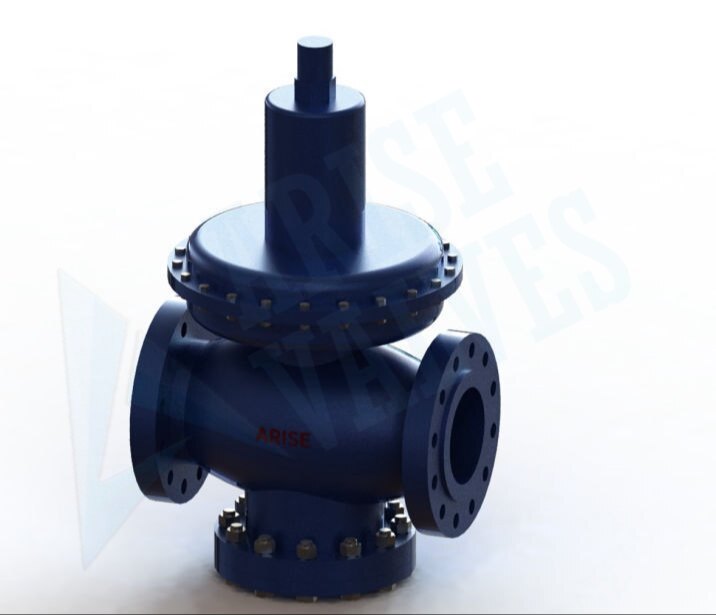Water pressure reducing valve
Water Pressure Reducing Valve
A Water Pressure Reducing Valve (PRV) is designed to regulate and maintain a consistent water pressure level in a plumbing system, preventing damage to pipes, fixtures, and appliances due to excessive pressure.
Key Features
- Automatically reduces high inlet pressure to a safe and stable level
- Prevents pipe bursts and leaks caused by sudden pressure spikes
- Available in stainless steel, carbon steel, and alloy steel
- Adjustable pressure settings for customized control
- Durable construction with corrosion-resistant materials
Types of Water Pressure Reducing Valves
- Direct-Acting PRV – Uses a spring-loaded diaphragm for simple, compact pressure regulation
- Pilot-Operated PRV – Provides precise control for large-scale industrial and municipal water systems
- Adjustable PRV – Allows users to set and modify output pressure based on system needs
- Flanged PRV – Designed for high-capacity pipelines with easy maintenance access
- Threaded PRV – Ideal for small to medium-sized plumbing systems
Applications
- Residential Plumbing Systems – Protects household pipes, faucets, and appliances
- Commercial Buildings – Maintains consistent water pressure in multi-story structures
- Industrial Water Supply – Ensures controlled pressure for manufacturing and processing plants
- Fire Protection Systems – Regulates pressure to ensure optimal sprinkler operation
- Municipal Water Distribution – Prevents excessive pressure in citywide water supply networks
Advantages of Water Pressure Reducing Valves
- Prevents water waste by controlling excessive flow
- Extends the lifespan of pipes, fixtures, and appliances
- Reduces energy costs by optimizing water pressure efficiency
- Minimizes noise and vibration caused by high-pressure water flow
- Enhances system safety by preventing pressure-related failures
Maintenance & Safety Tips
- Inspect the valve regularly for leaks or signs of wear
- Clean or replace filters to prevent clogging and ensure smooth operation
- Check pressure settings periodically to maintain optimal performance
- Follow manufacturer guidelines for proper installation and servicing
- Test the valve function to confirm it maintains consistent pressure
Water pressure reducing valve
Water Pressure Reducing Valve
A Water Pressure Reducing Valve (PRV) is designed to regulate and maintain a consistent water pressure level in a plumbing system, preventing damage to pipes, fixtures, and appliances due to excessive pressure.
Key Features
- Automatically reduces high inlet pressure to a safe and stable level
- Prevents pipe bursts and leaks caused by sudden pressure spikes
- Available in stainless steel, carbon steel, and alloy steel
- Adjustable pressure settings for customized control
- Durable construction with corrosion-resistant materials
Types of Water Pressure Reducing Valves
- Direct-Acting PRV – Uses a spring-loaded diaphragm for simple, compact pressure regulation
- Pilot-Operated PRV – Provides precise control for large-scale industrial and municipal water systems
- Adjustable PRV – Allows users to set and modify output pressure based on system needs
- Flanged PRV – Designed for high-capacity pipelines with easy maintenance access
- Threaded PRV – Ideal for small to medium-sized plumbing systems
Applications
- Residential Plumbing Systems – Protects household pipes, faucets, and appliances
- Commercial Buildings – Maintains consistent water pressure in multi-story structures
- Industrial Water Supply – Ensures controlled pressure for manufacturing and processing plants
- Fire Protection Systems – Regulates pressure to ensure optimal sprinkler operation
- Municipal Water Distribution – Prevents excessive pressure in citywide water supply networks
Advantages of Water Pressure Reducing Valves
- Prevents water waste by controlling excessive flow
- Extends the lifespan of pipes, fixtures, and appliances
- Reduces energy costs by optimizing water pressure efficiency
- Minimizes noise and vibration caused by high-pressure water flow
- Enhances system safety by preventing pressure-related failures
Maintenance & Safety Tips
- Inspect the valve regularly for leaks or signs of wear
- Clean or replace filters to prevent clogging and ensure smooth operation
- Check pressure settings periodically to maintain optimal performance
- Follow manufacturer guidelines for proper installation and servicing
- Test the valve function to confirm it maintains consistent pressure





